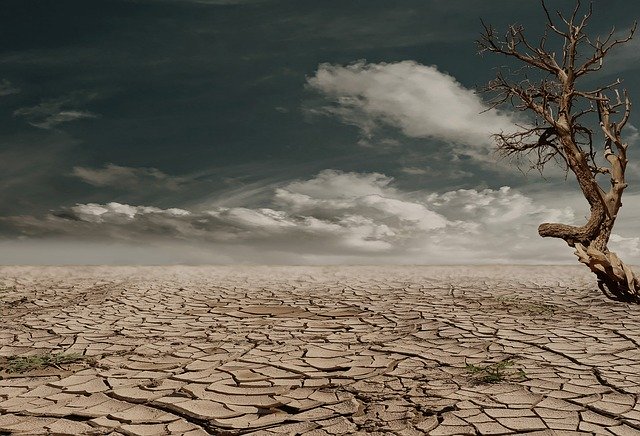The United Nations designates days of observance as educational tools to raise awareness of global issues, and if there’s one issue that needs more attention, it’s desertification. You can be forgiven if the word “desertification” brings to mind sweet treats; despite the risk that desertification will displace 50 million people in the next decade, most of us are unfamiliar with the term and unaware of the problem.
What Is Desertification?
Unfortunately, it has nothing to do with dessert. The encroachment of sand dunes on inhabited land, and the expansion of deserts due to anthropogenic climate change are part of it. But desertification is broader than expanding deserts. Desertification is the long-term degradation of dryland ecosystems by human activities, whether indirectly through climate change or directly through bad land management or simple overuse. It can be a result of unsustainable farming practices that deplete soil; mining; overgrazing, where hooves and grass removal cause topsoil erosion; and clear-cutting.
What’s the Problem?

Human activity has already altered more than 70 percent of natural ecosystems worldwide. More than 2 billion hectares (nearly 5 billion acres) of previously productive land are now categorized as degraded. The wet equatorial region is contracting in a phenomenon called the tropic squeeze. Meanwhile, the north and south subtropical dry zones that form the edges of the tropics are growing, bringing ever-drier weather to places as far from the equator as the Mediterranean.
A recent study has found that one-third of the world’s population currently lives in areas predicted to reach Sahara-like heat conditions within 50 years. Since 2008, an average of 24 million people have been displaced by catastrophic weather disasters each year. Desertification threatens to increase that number dramatically, and was identified as a threat to global stability as early as 2007.
Direct Improvements
Lying mostly within the tropics, Africa is the continent most affected by desertification, but North America is not immune. More than 30 percent of North America is arid or semi-arid land, with about 40 percent of the continental United States (17 Western states) vulnerable to desertification. Whether in Africa or North America, the direct actions necessary to stop or slow desertification are the same. These are reforestation, revegetation, sustainable grazing practices, and other erosion-control measures, combined with wise water management.
World Day To Combat Desertification & Drought
The 1992 Rio Earth Summit in Brazil identified desertification (together with climate change and biodiversity loss) as one of the world’s three greatest environmental challenges. In 1994, the United Nations established the Convention to Combat Desertification. At the same time, they declared June 17 the “World Day to Combat Desertification and Drought.” Some level of desertification affects 169 of the convention’s 197 member nations.
For 2020, which wraps up a 10-year “Decade for Deserts” campaign, the theme is “Food. Feed. Fiber.” The goal is to draw attention to the impacts of growing food for human consumption, growing feed for the animals we eat, and growing fibers for the manufacture of clothing. The online global observance events, hosted by Korea, are still available.
What You Can Do
Thanks to a global economy, no matter where you live, your actions have an impact on desertification.
In addition to their contribution to climate change, agricultural practices in dry climates related to food and fiber production for global consumers contribute significantly to the problem. To feed a growing population, food production will require an additional 300 million hectares (roughly 740,000,000 million acres) of land by 2030. However, this number could shrink if food systems become more efficient. And the American diet has a particularly large footprint. This is largely due to Americans’ dependence on meat. The production of meat has a tremendous environmental impact; it degrades land both through grazing and the agricultural production of animal feed.
Clothing and footwear production causes 8 percent of global greenhouse gas emissions. That number will rise almost 50 percent by 2030 unless current consumption patterns change. This is another area where Americans can dramatically reduce their impact.
And because climate change is hastening desertification world-wide, any steps you take to reduce your carbon footprint are steps to protect fragile dryland ecosystems.
The post Combatting Desertification appeared first on Earth 911.








